Story
Staff Spotlight: Dr Yanna Alexia Fidai - Earth Observation and Remote Sensing Scientist
08 June 2025
Meet Dr Yanna Alexia Fidai, whose research explores how climate change, pollution and changing currents have created the perfect storm for massive sargassum blooms across the tropical Atlantic. Discover her work to monitor this free-floating seaweed – with mats reaching depths of 7 meters and spanning hundreds of kilometres – and support the communities impacted by it.
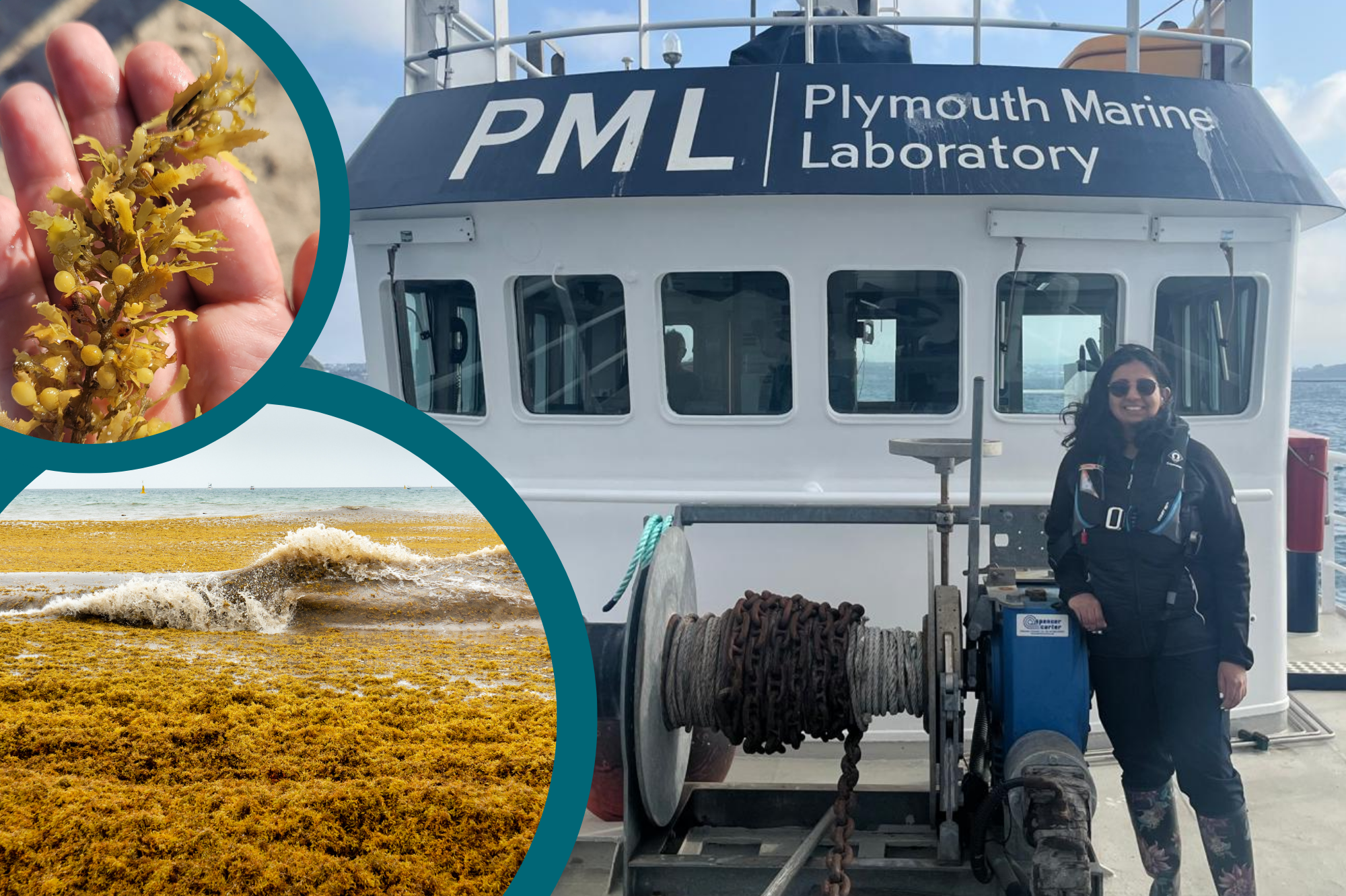
Image caption: Dr Fidai stands onboard the deck of PML’s research vessel the Plymouth Quest. On the left of the image are two photos of the seaweed sargassum, one up close, and the other showing it smothering a shoreline in Mexico.
We begin by asking Dr Fidai whether she could recall any early experiences or memories as a child that may have inspired her career into science, or more specifically working on environment issues.
“While I can’t pinpoint a single defining moment, I’d say it’s been a collection of experiences throughout my life that have shaped my path. I’ve always been drawn to the relationship between people and the environment, how we evolve alongside, and in response to, the changing physical world around us. It’s that interface that continues to captivate me.”
“Growing up in London, a very dynamic city, gave me a strong sense of how human and environmental systems interact in complex ways. My multi/mixed-ethnic background meant I was exposed early on to different ways of seeing the world, and hearing stories from my family really deepened my curiosity about people, place, and change. I’ve also been fortunate to travel and experience a wide range of landscapes (volcanoes, rivers, mountains, coastlines, deserts – to name a few!) and I’ve always found myself fascinated by how these environments shape human lives and how communities adapt to them.”
“Academically, I followed what interested me. At A-Level I studied Geography, Biology, Politics, Economics, and Classics, and went on to study Geography at university, a subject that brought all these threads together and led me to where I am today.”
Dr Fidai completed her interdisciplinary PhD, ‘A Spatial and Temporal Assessment of Sargassum Blooms in the Tropical Atlantic’ – which included elements of remote sensing, oceanography and ecology – at the University of Southampton. We asked what led her to explore this growing environmental issue.
“Interestingly, I actually began my PhD with a different focus; I was originally looking at climate change adaptation in river deltas. But early on, my supervisors, Prof. Emma Tompkins and Prof. Jadu Dash, launched the Economic and Social Research Council-funded SARTRAC* project, and they invited me to switch topics. After a bit of reading, it felt like a clear and exciting choice.”
[*SARTRAC: Teleconnected SARgassum risks across the Atlantic: building capacity for TRansformational Adaptation in the Caribbean and West Africa.]
“Sargassum blooms are a powerful example of how environmental change directly affects communities. These massive seaweed events create both ecological and socio-economic challenges, especially for coastal regions, impacting tourism, fisheries, water quality, access to beaches, biodiversity, and even human health. What drew me in was how immediate and tangible the issue was, and how urgent the need was to support some of the most vulnerable communities.”
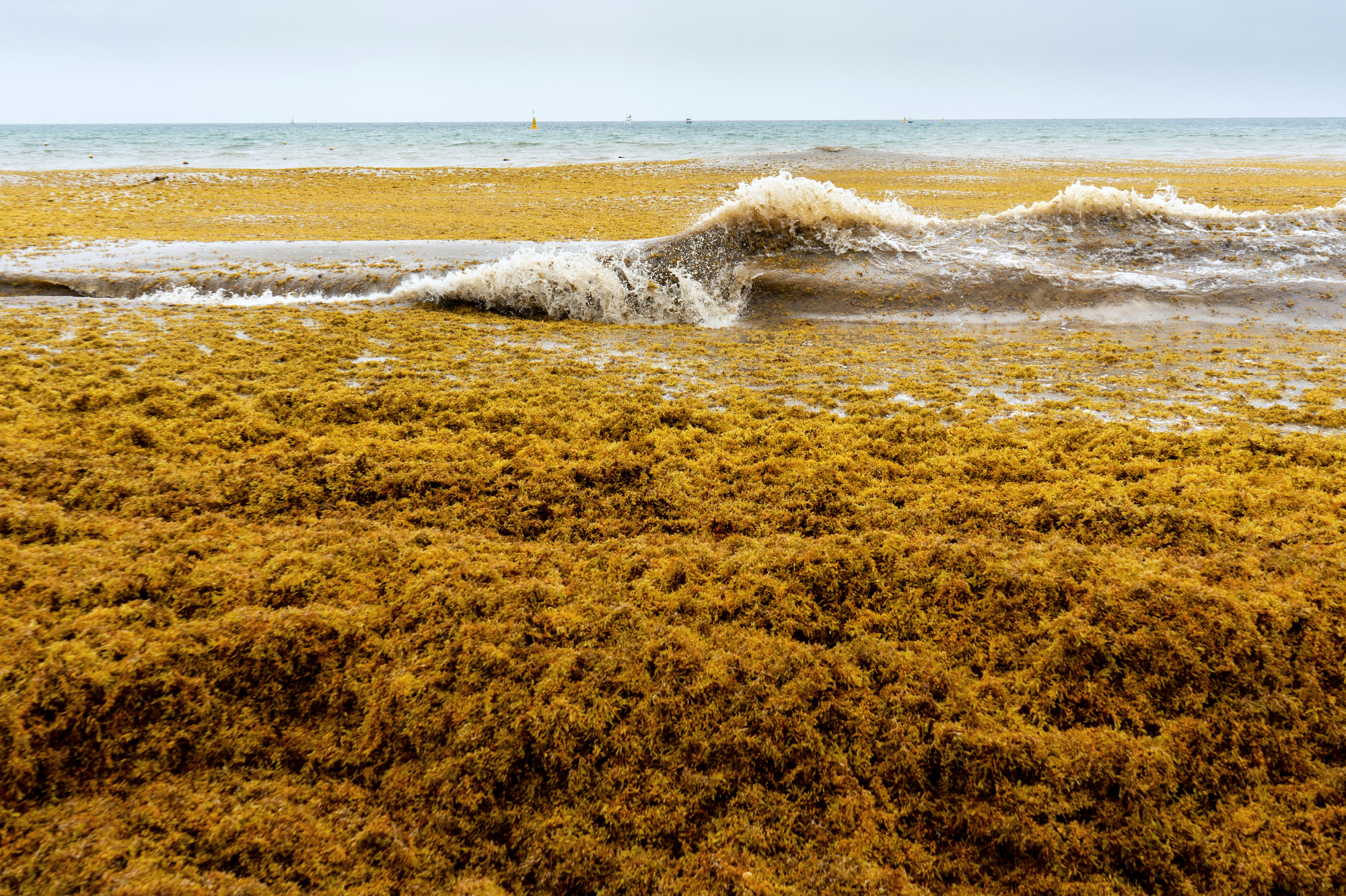
Image caption: Thick mats of sargassum blanket the shoreline in Mexico, posing serious challenges for coastal communities. In nearshore waters, these blooms can overwhelm marine life – covering coral reefs and seagrass beds – and their breakdown contributes to murky water, excess nutrients, and potential eutrophication.
“The chance to be part of cutting-edge research into an emerging environmental challenge, and to contribute to something with real-world impact, was an opportunity I couldn’t pass up. My goal was to help fill critical research gaps so that affected communities could be better equipped to respond and adapt; I hope my work has played a small part in moving that forward.”

Image caption: Yanna graduating from the University of Southampton. Image credit: Dr Fidai.
Whilst graduating with flying colours, Dr Fidai’s PhD experience was far from typical; taking place during the height of the COVID-19 pandemic. With strict restrictions on travel and outdoor activity, she faced significant challenges in conducting critical fieldwork.
A key hurdle was to find a way to attach in-situ GPS trackers to existing mats of sargassum in order to validate satellite data – a vital step to ensure she was accurately tracking movement of the mats from space. With limited access to lab facilities, Yanna improvised at home, designing and testing her early prototypes in her bathtub!
“This was a definitely an adventure in DIY science! The goal was to design a GPS tracker system that could be deployed with sargassum mats in the Atlantic to validate satellite imagery.”
“I started with a cost-benefit analysis of the different GPS tracker options to decide which tracker was the best choice. Then came the first challenge, figuring out how to make the trackers float and enmesh within the sargassum so they would follow the same drift path. Since I couldn’t travel due to COVID, I had to test everything from home, which meant my bathtub became a makeshift lab. I tried a few off-the-shelf waterproof cases first.”
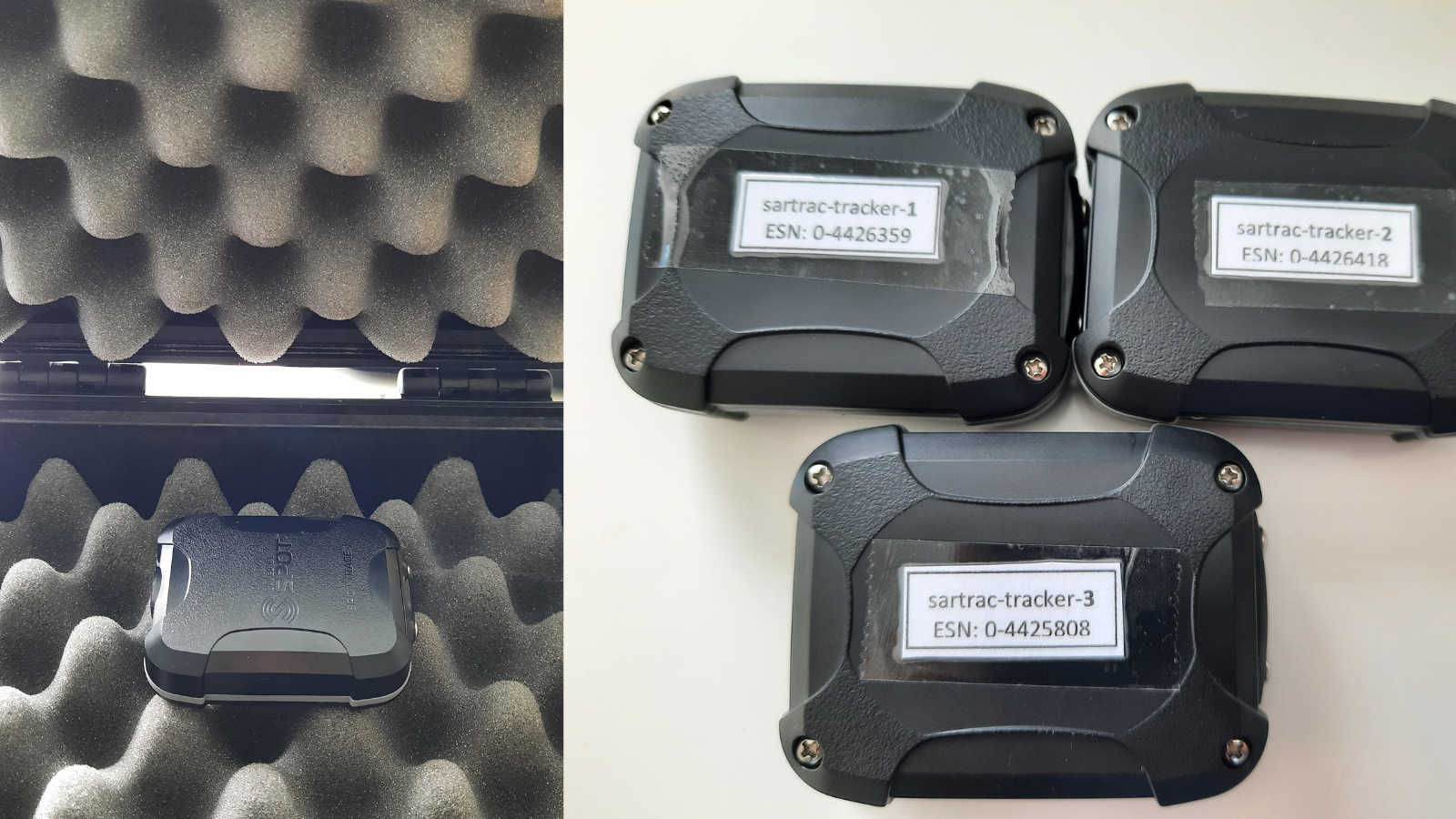
Image caption: the GPS trackers in waterproof cases. Image credit: Dr Fidai.
“The next challenge was figuring out how to get these deployed when I couldn’t travel. I appealed for help in boat magazines, though the charity Yachts for Science, anyone sailing across the Atlantic, and finally met Prof. Hazel Oxenford at the University of West Indies who was beyond helpful. Three cases and trackers were shipped to Barbados and deployed in the Caribbean Sea. One was picked up by a fishing vessel (which I could track moving out to sea and back to St Lucia), another flipped over and lost signal, the third washed ashore fairly early on.”
![]()
Image caption: the respective journeys of each GPS tracker across the Caribbean Sea, with the shapes of the mats on the left as detected using Sentinel-2 satellite imagery. Image credit: Dr Fidai.
“So, it was back to the drawing board. Learning from the first attempt, I now knew I needed something that floated reliably, kept the tracker upright, didn’t look valuable, and could be built with easily accessible materials that local partners could find and assemble if needed. With help from my supervisors and the SARTRAC team, we experimented with various materials and came up with a ‘recipe’ for a housing unit. We tested those in the bath and later in the sea off Bournemouth to check stability.”

Image caption: Yanna pictured at home, building devices to host the GPS trackers that would ‘float and enmesh within the sargassum so they would follow the same drift path’, which she tested in her bath at home. Image credit: Dr Fidai.
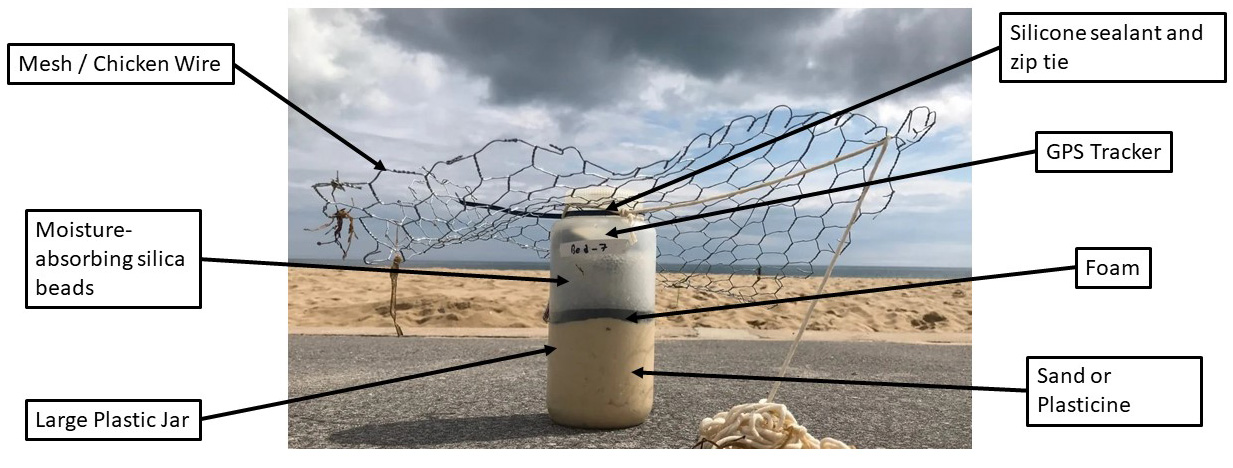
Image caption: An image and diagram of the winning design.
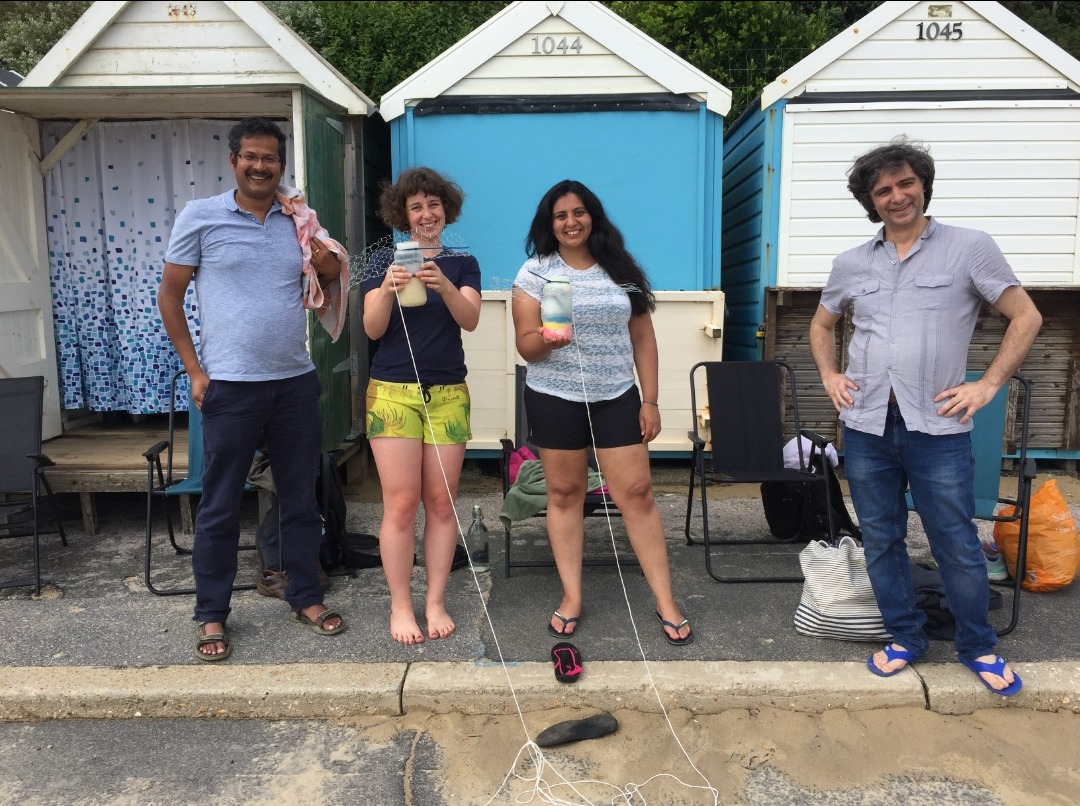
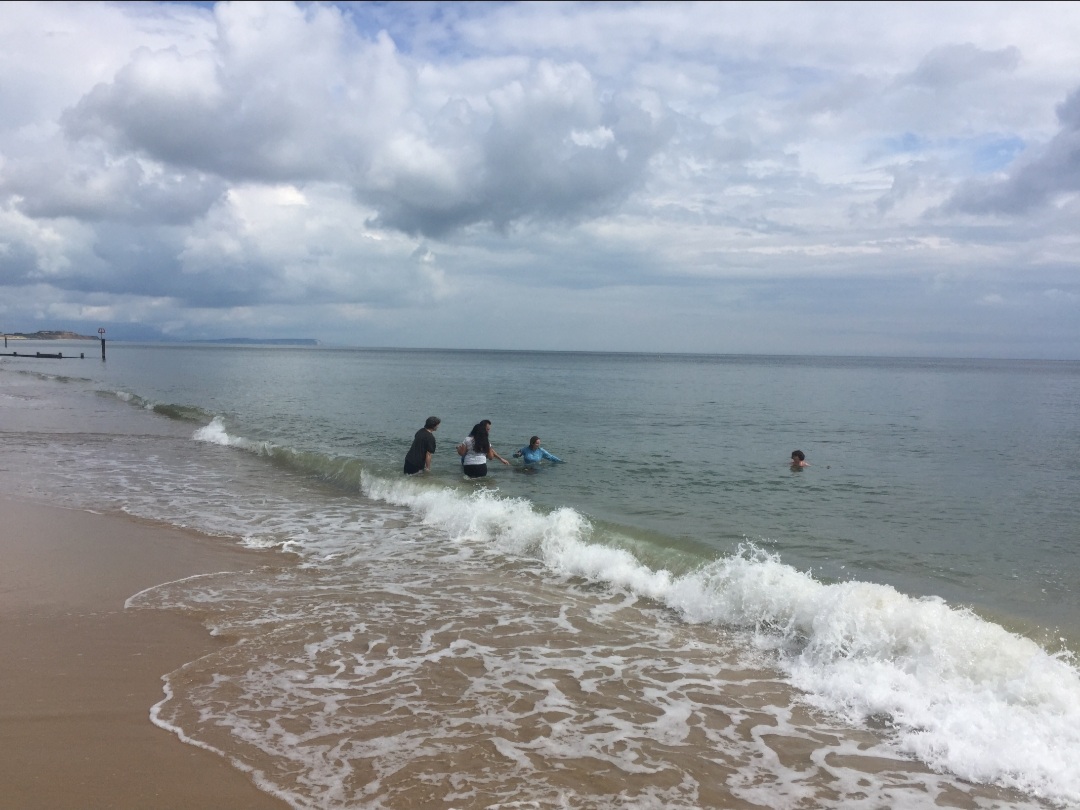
Image captions: Yanna and colleagues testing the devices in the sea off Bournemouth to check stability.
“We shipped 10 trackers and the full ‘recipe’ design guide to local collaborators in Barbados and Jamaica, who deployed them in the Caribbean Sea. The trackers sent hourly location updates, allowing me to monitor the real-time movement of individual sargassum mats.”
“A further challenge I had was that there were many tropical storms and hurricanes covering the study area making visibility of the mats using satellite data challenging.”
“Thankfully, colleagues Professor Lauren Biermann and Dr Nicola Martin (who were then) at the NERC Earth Observation Data Analysis and Artificial-Intelligence Service (NEODAAS) helped me to use Sentinel-1 SAR data to ‘see through’ the cloud and validate the sargassum mats and GPS tracker positions. That data was critical as it helped me track how the morphology and health of the mats changed over time, and contributed to developing early warning systems to help coastal communities better prepare for incoming blooms.”
[For information, NEODAAS is hosted at Plymouth Marine Laboratory, overseen by the National Centre for Earth Observation (NCEO) and funded by the Natural Environment Research Council (NERC).]
After studying it for years, we next asked Dr Fidai what it was like to finally see sargassum in person – and how it felt to witness the reality of such massive blooms.
“I finally saw sargassum for myself in March 2022, when I was able to go to Barbados for fieldwork. After years of tracking it from space and working with data and satellite images, it was incredible to see it with my own eyes.”
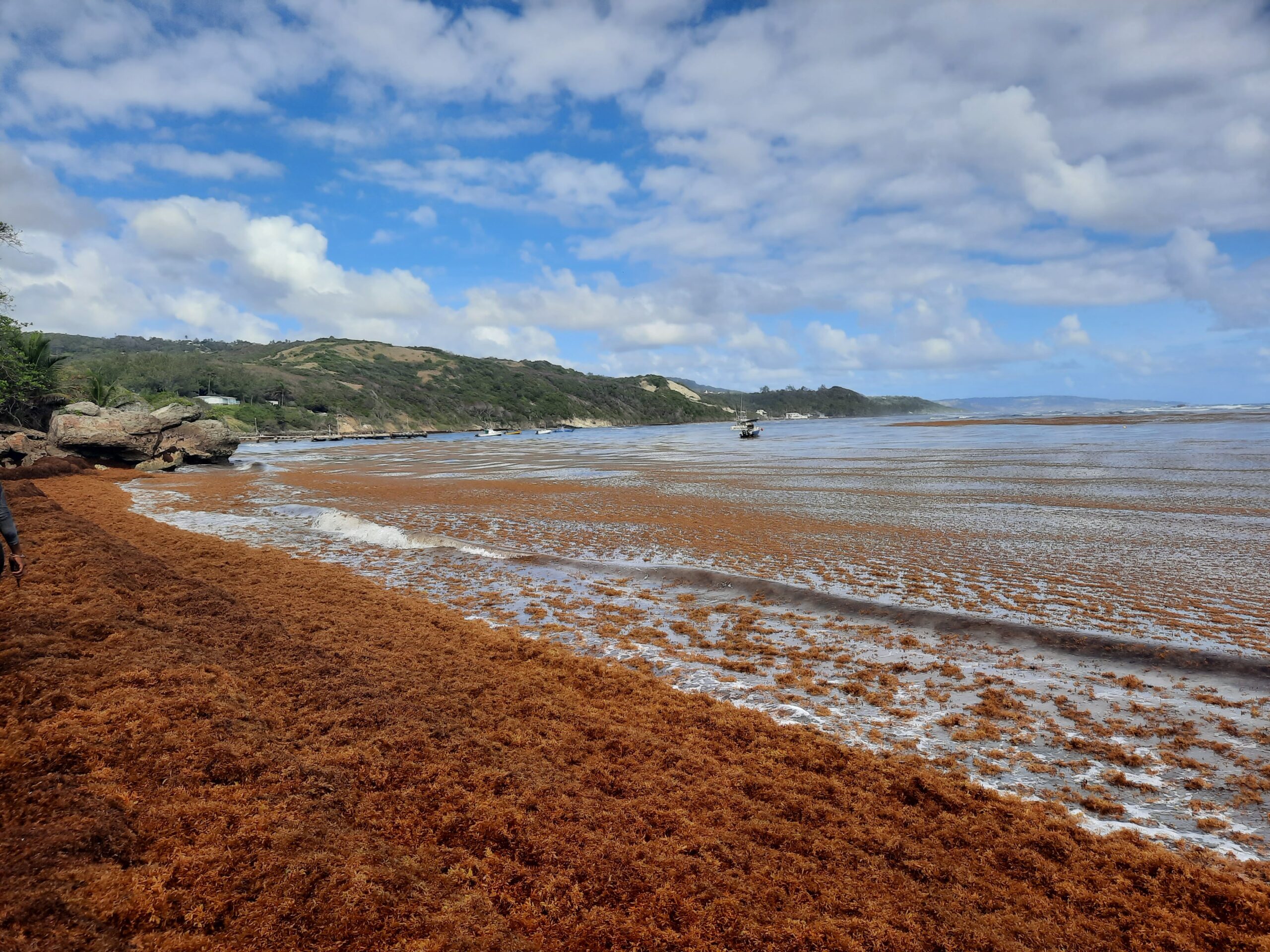
Image caption: A beach in Barbados engulfed by sargassum. As the seaweed decomposes, it emits harmful gases such as hydrogen sulfide, methane, and ammonia. These emissions, along with the leaching of arsenic and heavy metals, can pose risks to both human health, ecosystem biodiversity, and local water supplies. Image credit: Dr Fidai.

Image caption: Yanna and colleagues monitoring sargassum washed ashore on a beach in Barbados. Image credit: Dr Fidai.
“It really changed the way I understood it. Being there in person gave me a much deeper appreciation of how sargassum behaves, how it moves with the currents, how it accumulates in different patterns, and how it’s deposited along the coast. You can only learn so much from imagery and reading. Seeing the sheer scale of it, and how it affects beaches and communities in real time, was both fascinating and quite moving. It brought home the human side of the science in a way that satellite data never could.”
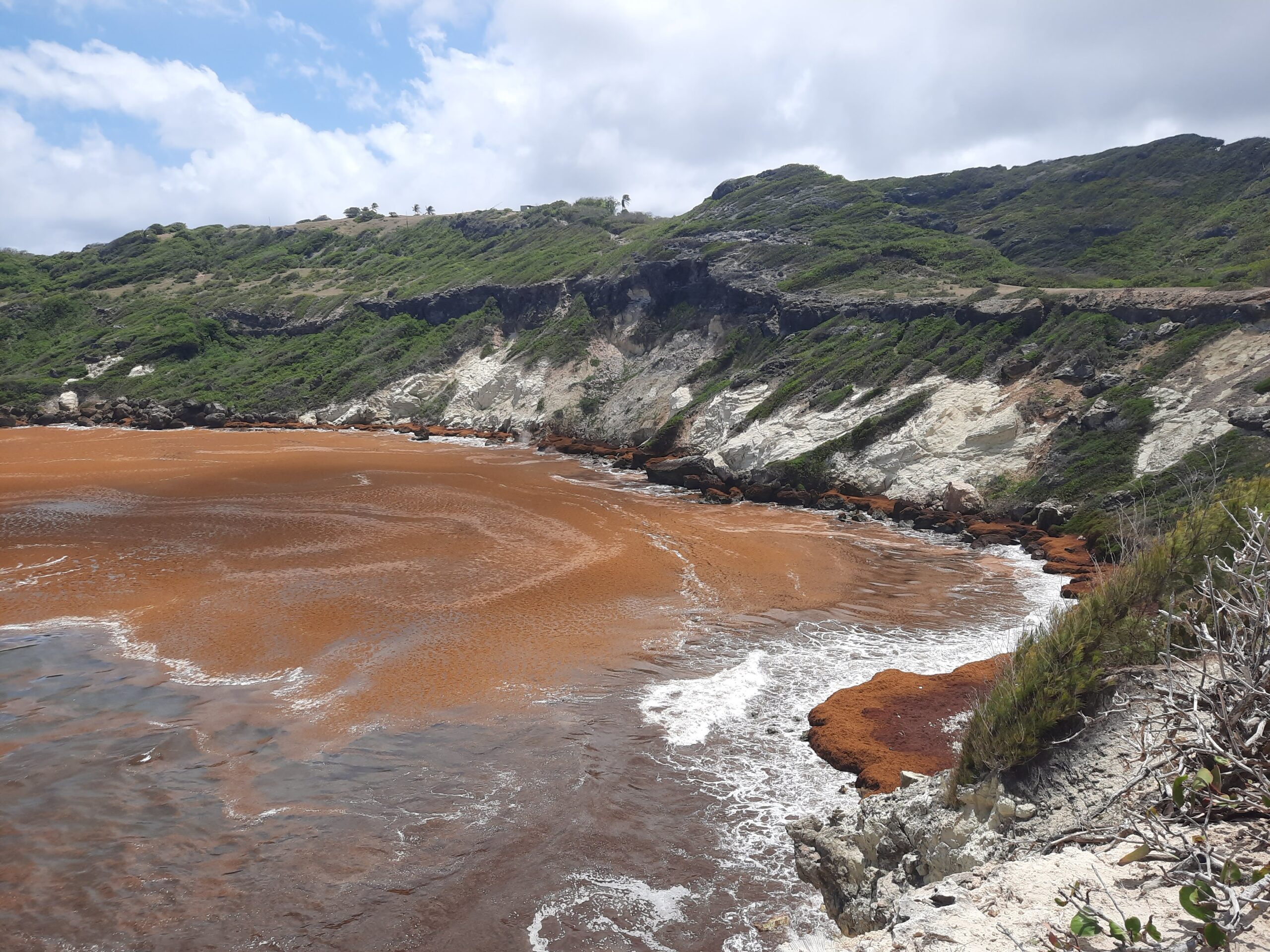
Images above: Sargassum chokes a beach in Barbados. The socio-economic impact of sargassum landings is both significant and complex, disrupting coastal livelihoods, tourism, and daily life in affected communities. Dr Fidai says, “People are unable to get their boats out because of the sargassum stacked on the beach. When they’re fishing, sargassum gets stuck in nets, engines, and propellers – so they’re working longer hours for less. It’s having an impact on local food, fish exports, and incomes.” Image credit: Dr Fidai.
Dr Fidai credits much of the success of her to the support of colleagues, partner organisations, and – most importantly – the local contacts and communities on the ground in areas impacted by sargassum. We asked her more about her work with local stakeholders.
“Working with local partners has been one of the most rewarding parts of my research. In Ghana and Mexico, we [as part of SARTRAC, SARCAP and SargSNAP projects] conducted focus group interviews to understand what people already knew about sargassum and, importantly, what they wanted to know. This helped shape how we communicated research findings and ensured that the work was genuinely useful to the communities being impacted.”

Image caption: Bunches of sargassum washed ashore a beach in Ghana. Image credit: Dr Fidai.

Image caption: A ‘close up’ of sargassum. Image credit: Dr Fidai.
“In Ghana, we also had the chance to meet with village chiefs to better understand the local context and build relationships. These conversations were incredibly valuable in shaping how we approached community engagement.”
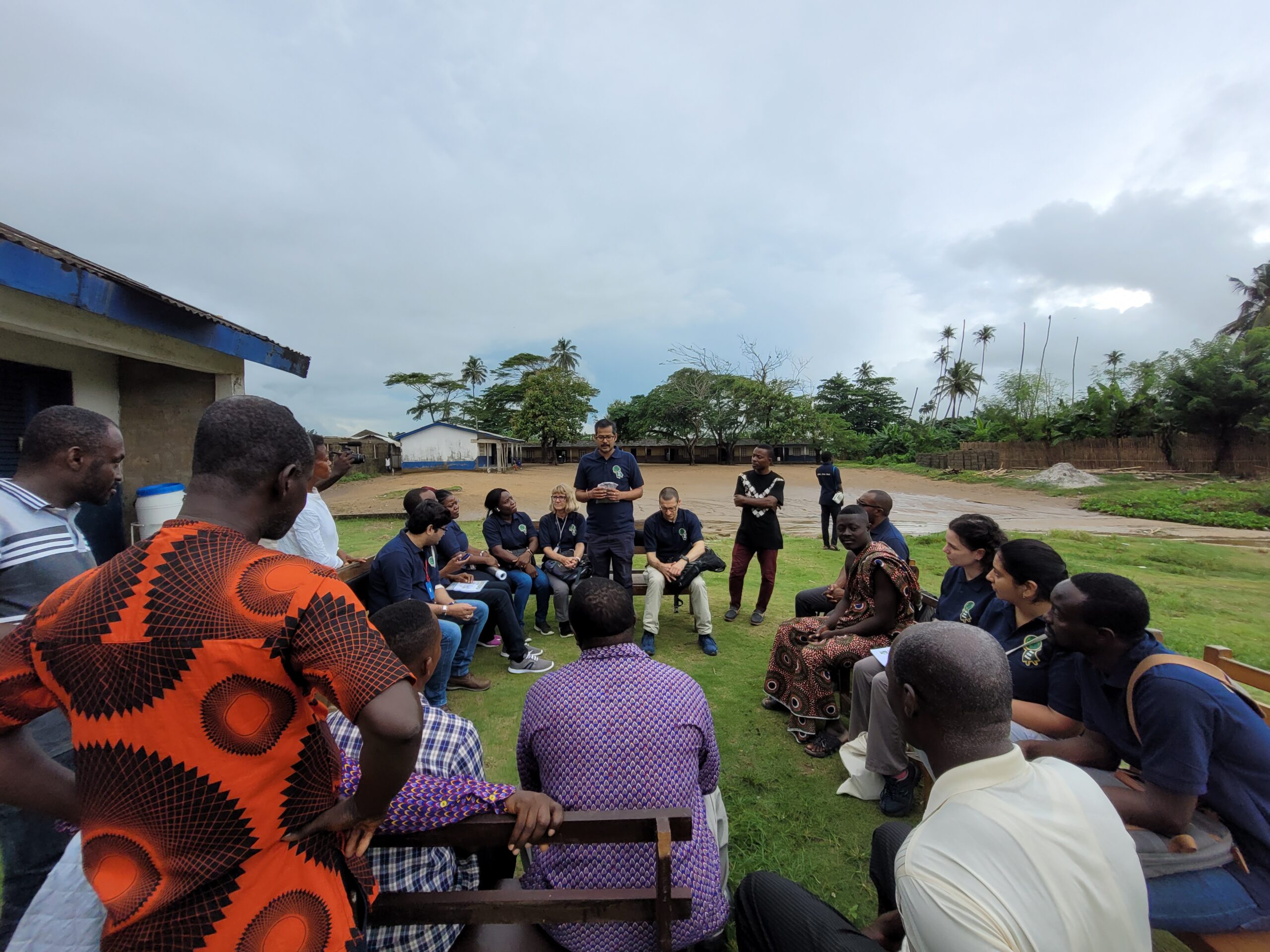
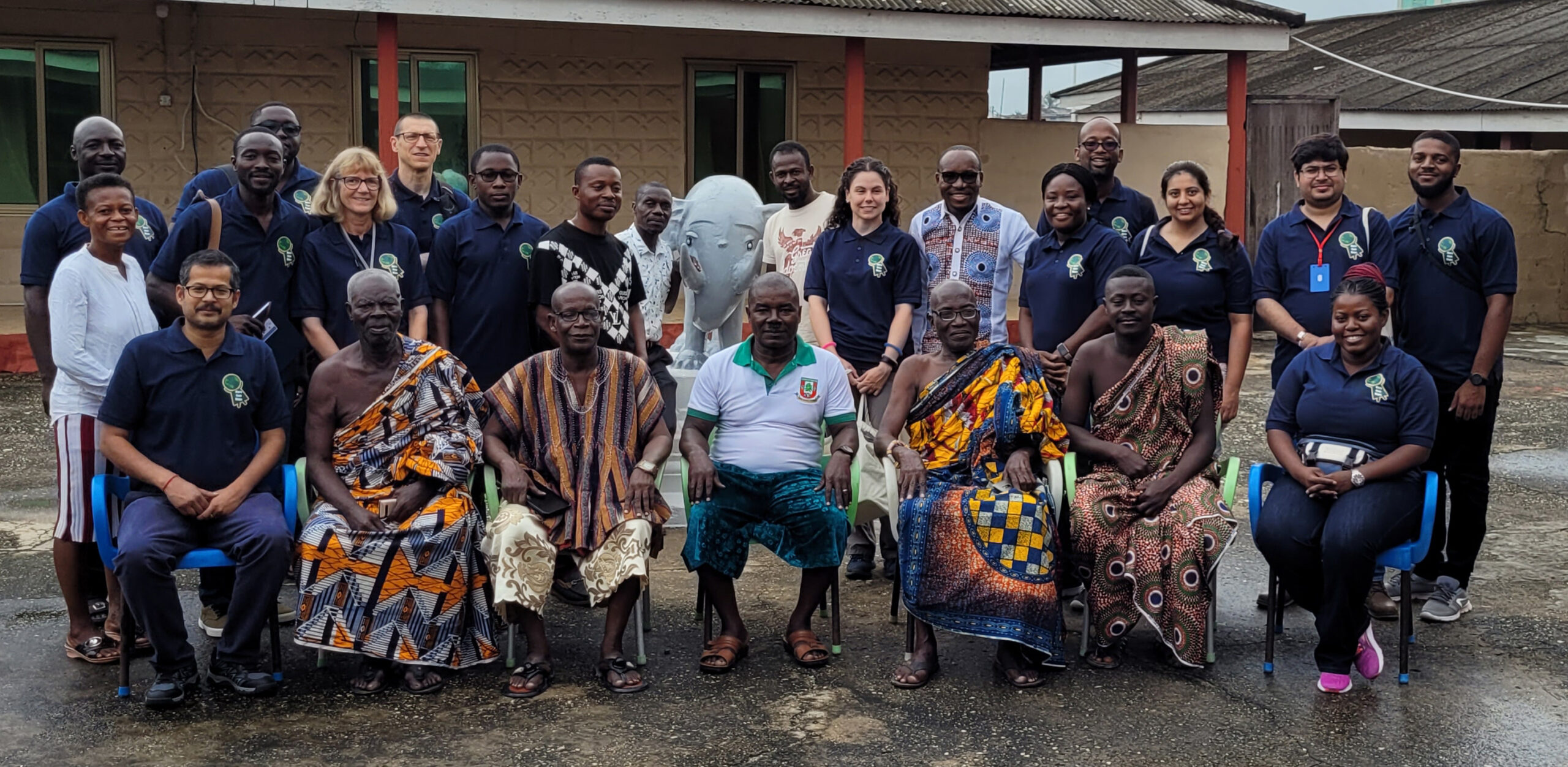

Image captions: Dr Fidai and colleagues pictured with the local communities and village chiefs in Ghana. Image credits: Dr Fidai.
“Throughout my PhD and subsequent projects, I collaborated closely with researchers based in Jamaica, Barbados, Ghana, and Mexico. Their expertise, local knowledge, and support were crucial for both the scientific work and for making sure the research had a real-world impact.”
“Colleagues at the University of Southampton developed a citizen science initiative called SargSNAP – a youth-led citizen science project in Ghana and Mexico, which aims to photograph landed sargassum at key locations.”
“We installed fixed photo posts in key locations and visited schools to teach students about sargassum and how to contribute to the project. It was a great way to engage young people and create a sense of ownership around the science.”
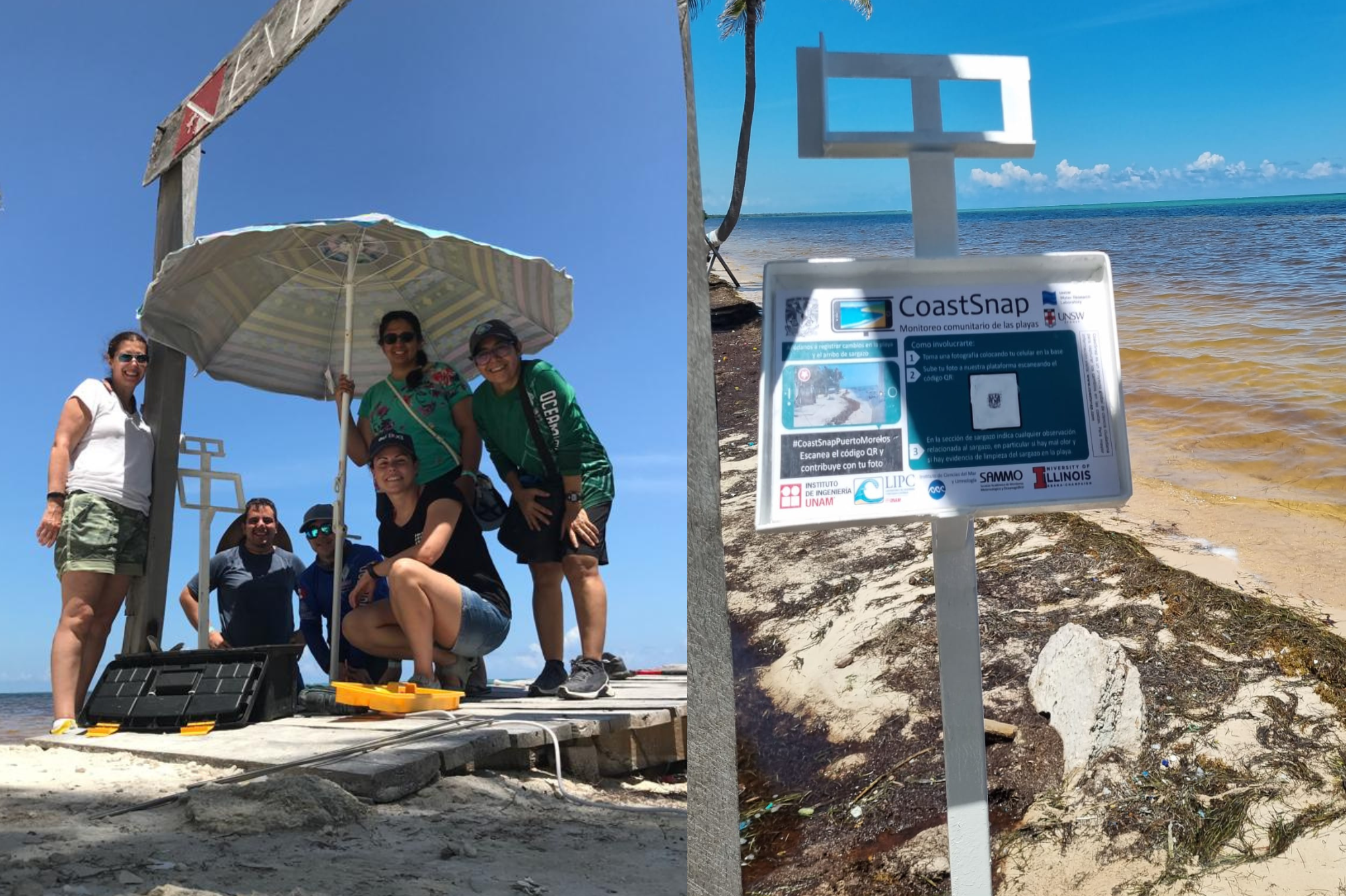
Image credit: Dr Fidai and colleagues deploying citizen science tools in the form of fixed photo posts in Mexico to support monitoring of sargassum. Image credit: Dr Fidai.
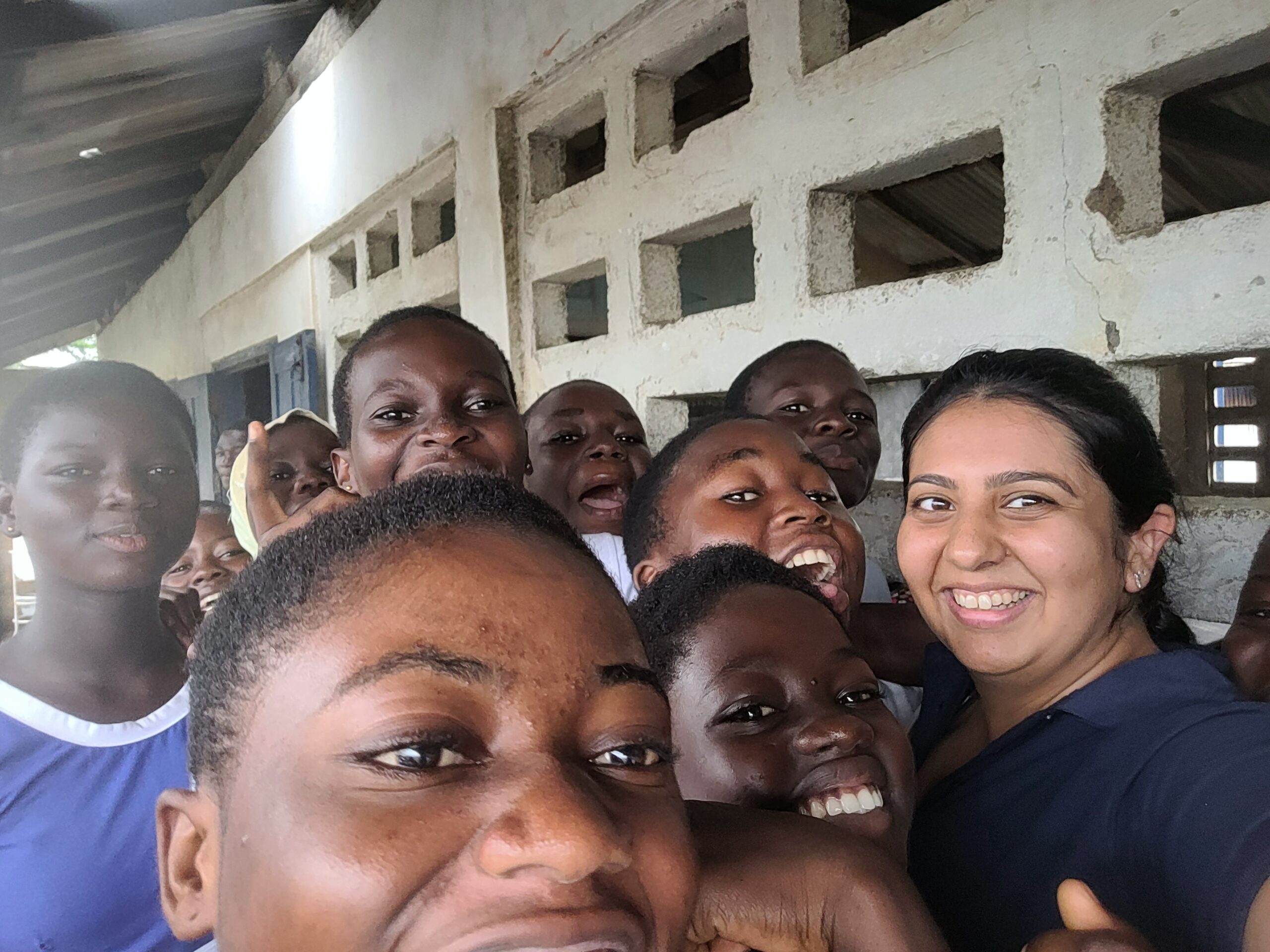
Image captions: Dr Fidai and new friends in Ghana, who met and began working together through the SargSNAP initiative. Image credit: Dr Fidai.
“We also developed ‘More than Maps’ at the University of Southampton, a programme that offers online and in-person workshops for students and young professionals. We’ve delivered them internationally to support capacity building and help people monitor and detect sargassum blooms themselves using open-source software and freely available data. It has since expanded to include a range of environmental topics. The workshops are hands-on and designed to introduce participants to current environmental challenges and the research tools we use to study them.”
“Through all of this, the aim has always been to make the science useful and accessible, and to support local communities and researchers in building resilience to environmental change.”
Dr Fidai goes on to highlight that, despite the immense challenges posed by sargassum, it may also offer valuable opportunities. In her recent article for Environmental Monitor, ‘Sargassum Surge: How Seaweed is Transforming Our Oceans and Coastal Ecosystems’, she explores its potential uses – from fertiliser and biofuel, to applications in pharmaceuticals. We asked her to expand, and how far away are we from such potential solutions.
“Not far at all! In fact, many of these solutions are already happening. Across the region, people are showing incredible creativity and ingenuity in turning sargassum from a challenge into a resource. Some businesses are producing fertiliser using sargassum extracts, others are even making construction blocks by substituting cement with dried sargassum. There’s also ongoing research into its potential as a raw material for biofuels and pharmaceuticals, as well as for carbon sequestration.”
“I really believe there’s so much more we can do with it. The barrier is not a lack of ideas, but often a lack of infrastructure. Many of the islands and coastal countries most affected by sargassum don’t yet have the processing facilities or laboratories needed to transform it at scale. Transporting and storing it is also a challenge, especially given how unpredictable the landings can be from year to year.”
“That said, the potential is absolutely there. With the right investment and collaboration, we could see sargassum becoming a valuable bioresource, one that supports local economies and reduces environmental harm. It’s a complex issue, but there’s a lot of hope and innovation in this space, and that’s really exciting to see.”
We next asked Yanna to describe how she came to join Plymouth Marine Laboratory, and what attracted her to the organisation.
“There wasn’t much of a gap between finishing my PhD and joining PML, the transition was pretty seamless. I joined the lab in January 2024, after completing my doctoral research.”
“The seed was actually planted at the European Space Agency’s Living Planet Symposium in Bonn in 2022. I met two now-colleagues from PML there (Dr Shubha Sathyendranath and Emma Sullivan) and had a brilliant time learning about their work on ocean colour remote sensing and microplastics. Their passion and openness really stayed with me. I also knew a colleague from Southampton who moved to PML (Dr Dhriti Sengupta!) and was excited to be here. The science was exciting, but honestly, it was also the people that made a big impression. When a position opened up at PML, it felt like the ideal fit, both academically and personally, so had to apply.”

Image caption: Dr Fidai on PML’s RV Plymouth Quest last month (May) joining for a sampling trip to L4, about six nautical miles south of Plymouth.
“Since being at PML I have continued working in coastal regions globally, but with a growing focus on ocean colour, phytoplankton, primary production, and ocean chlorophyll. During my time here I have deepened my expertise in detection methods, data analysis, and satellite-in situ data matchups in global coastal regions, as well as exploring hyperspectral data. I will be presenting my work from the FOCUS project on Global Coastal Trends in Primary Production at ESA’s Living Planet Symposium later this month, please come and talk to me about my work if you’re there too!”
Dr Fidai also has a new publication titled: ‘Sargassum Biomass Movement and Proliferation in the Eastern Tropical Atlantic’, access it here >>
“I am also excited to be involved in four new projects, three of which launched in the past two months, with another launching later in the year. These include: TIME which is focussed on exploring tipping points in marine ecosystems; CAMP where we will be looking at improving marine biogeochemical models for climate; Pyromar which investigates the impact of pyrogenic aerosols on marine biogeochemistry; and Phytodiverse where we will be using hyperspectral satellite data to explore phytoplankton community diversity and ecosystem function. I am looking forward to the science and collaborations these projects will bring.”
Lastly, to conclude our chat, we asked Yanna what she likes to do when she’s away from her research, and if she could tell us about any interests or hobbies.
“Outside of work, I try to spend as much time as I can outdoors and in nature. I’m a recurve archer, and I also volunteer as an archery coach, it’s a great way to unwind and focus. I also enjoy baking, especially when I have a bit of time to experiment.”
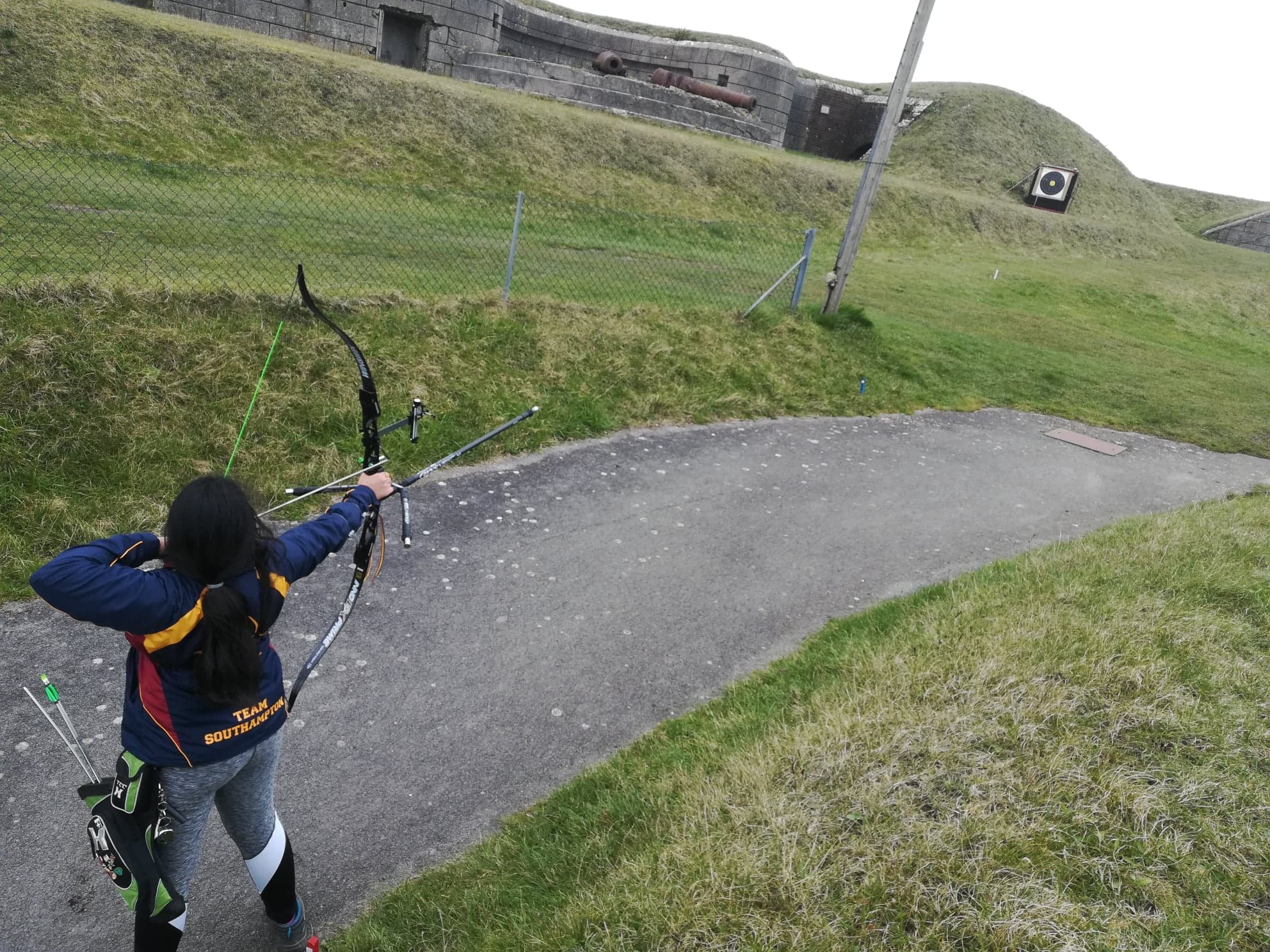
Image caption: Not the usual hobby! Yanna enjoys archery and volunteers as an archery coach. Image credit: Dr Fidai.
“On the more adventurous side, I love activities that push me out of my comfort zone. Last year, I went on a cycling tour through Italy, which was an amazing way to experience the landscape and really challenge myself physically.”
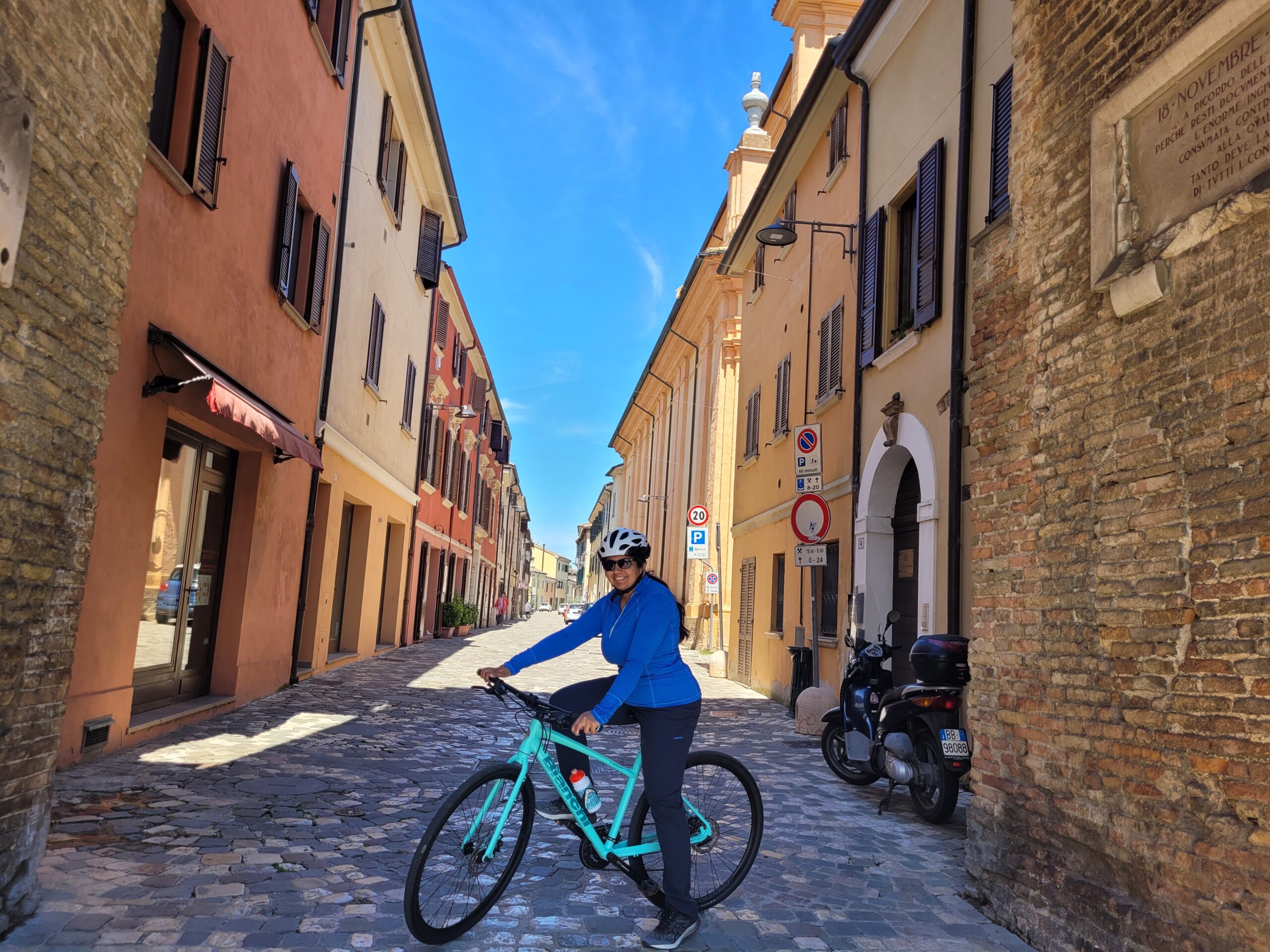
Image caption: Yanna taking on the cobbled streets of Italy through a cycling tour. Image credit: Dr Fidai.
“I also enjoy diving when I get the chance, I love exploring new underwater environments. And, when I get the opportunity, I love zip-lining, it’s a fun, adrenaline-filled way to connect with nature from a new perspective. I also love to continue travelling and visiting new cities, countries, and landscapes.”
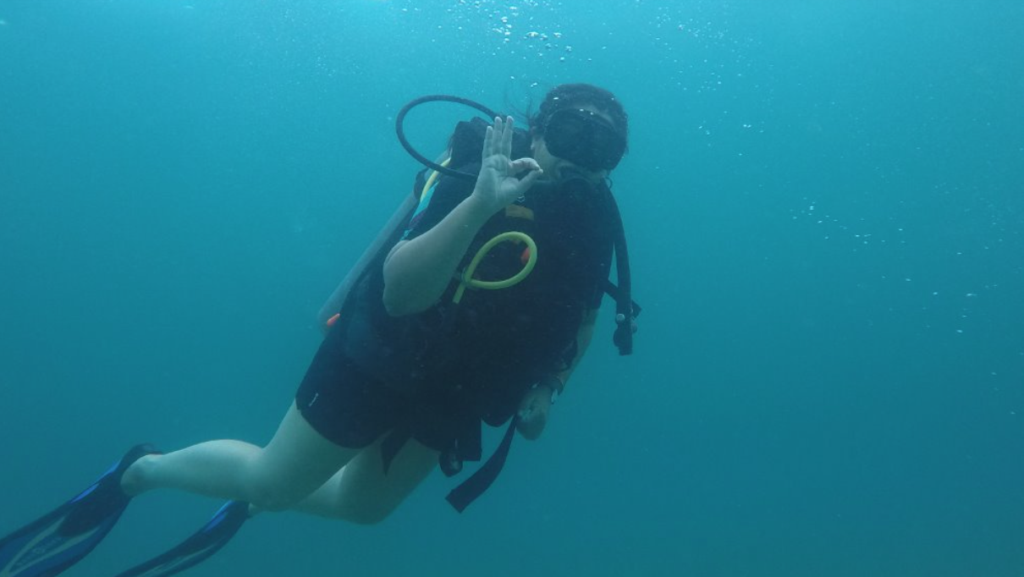

Image captions: Yanna enjoying life undersea and above ground through scuba diving and ziplining. Image credit: Dr Fidai.
A huge thank you to Dr Yanna Alexia Fidai for taking the time to share her fascinating research with us.
Related information
Sargassum, the free-floating seaweed proliferating with climate change
